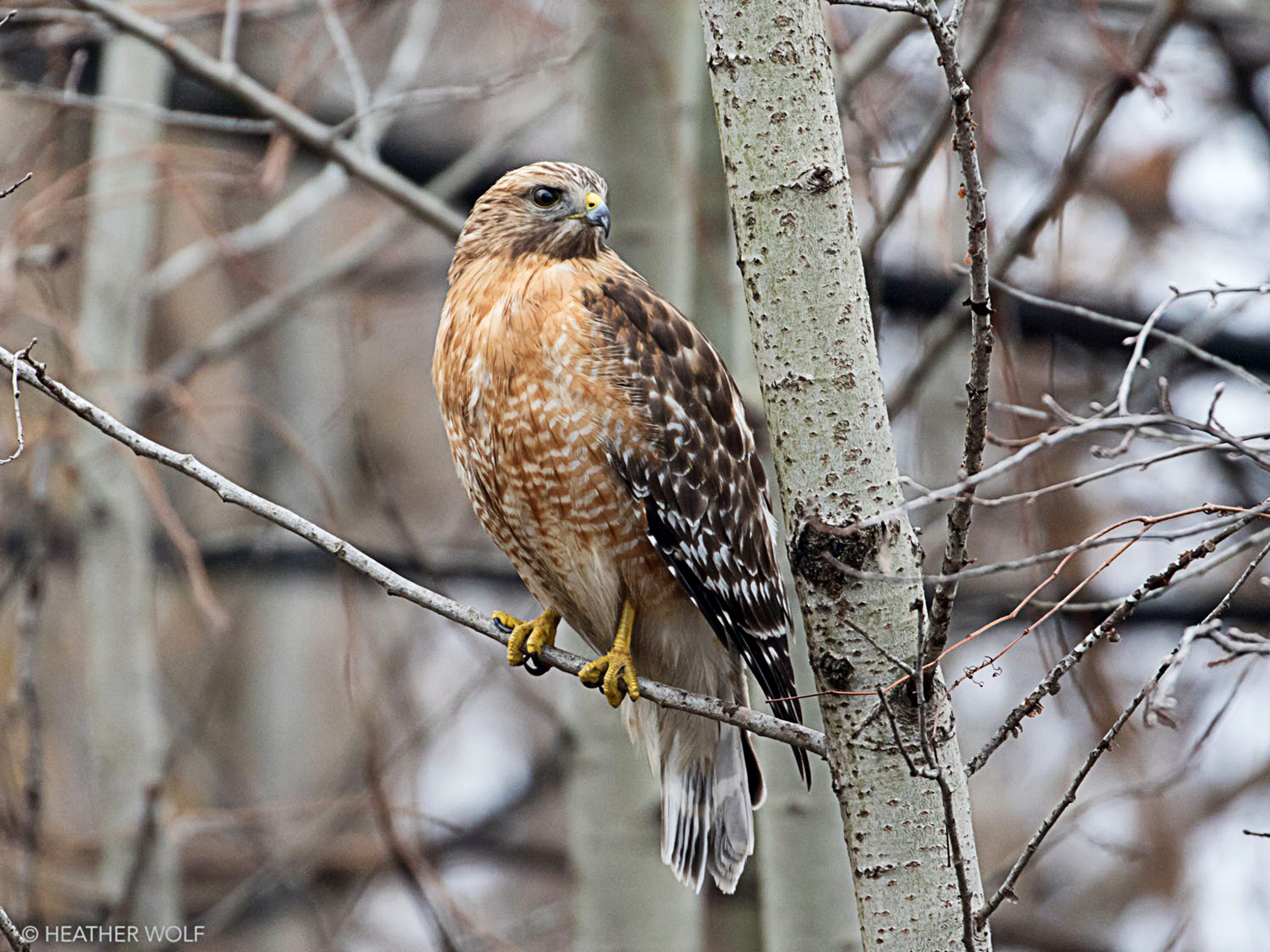Brooklyn Bird Watch: Red-Shouldered Hawk Seen at Marine Park Golf Course
Red Shouldered Hawk. Scientific Name: Buteo lineatus.

Today Brooklyn Bird Watch features a Heather Wolf photo of the Red Shouldered Hawk, a cousin to the Red Tailed Hawk, featured in Brooklyn Bird Watch back in June of 2021. Today’s photo by Ms Wolf was shot at the Marine Park Golf Course.
As the Cornell Lab notes, “Whether wheeling over a swamp forest or whistling plaintively from a riverine park, a Red-shouldered Hawk is typically a sign of tall woods and water.” As this hawk in Ms Wolf’s photo is probably doing, they are often spotted looking for prey perched in a tree along a stream or a pond.
The Red-shouldered Hawk is considered one of the most distinctly marked common hawks in North America, with barred reddish-peachy underparts and a strongly banded tail. They make a familiar whistling sound so you will know when one is near, even if you can’t see it.
A stunningly beautiful raptor in flight, the Red-shouldered hawk is easy to identify at a distance with translucent crescents near the wingtips that catch the sunlight, and a black tail with narrow white bands that fans out while the bird is soaring or gliding in the open ski. Primarily they hunt rodents, frogs, and snakes, but have been known to take on larger prey like, for instance, a pheasant. They also like to target birds and squirrels at bird feeders and like to attack from directly above the prey. Blue Jays mimic the whistle of the Red-shouldered hawk and it is presumed the jays do this to avoid predation.

Brooklyn Boro
View MoreNew York City’s most populous borough, Brooklyn, is home to nearly 2.6 million residents. If Brooklyn were an independent city it would be the fourth largest city in the United States. While Brooklyn has become the epitome of ‘cool and hip’ in recent years, for those that were born here, raised families here and improved communities over the years, Brooklyn has never been ‘uncool’.